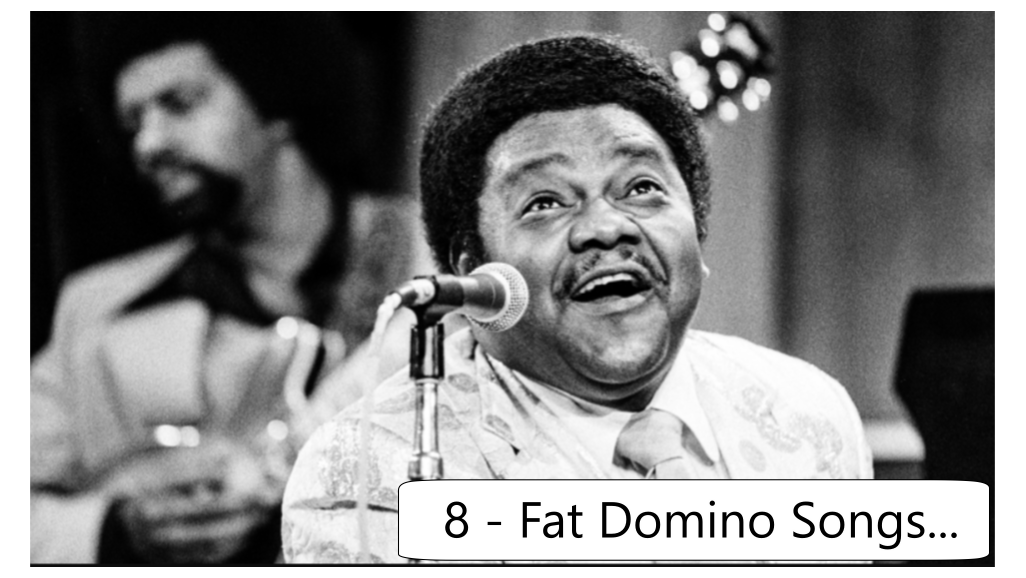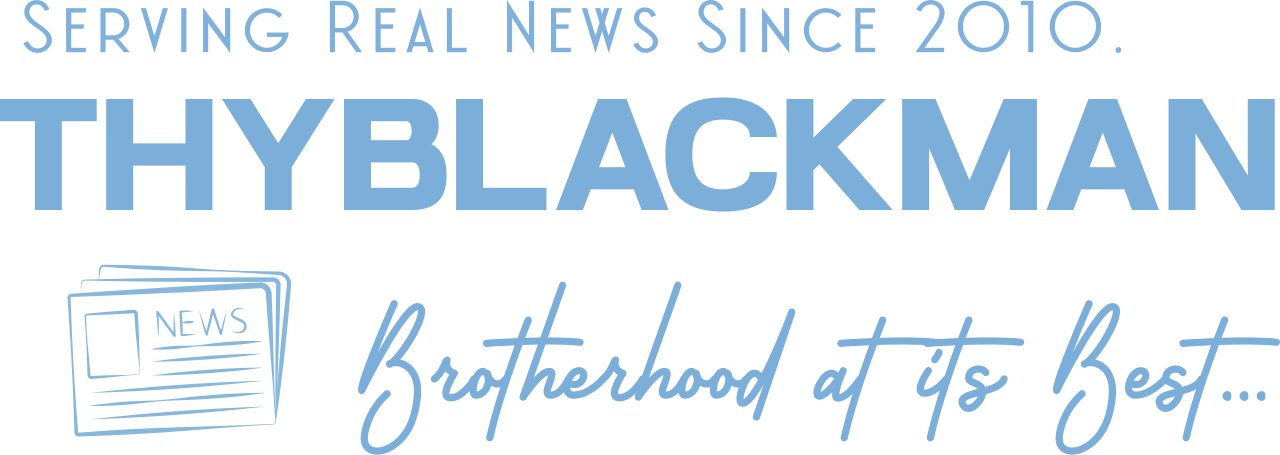(ThyBlackMan.com) Few artists have left a mark on American music as enduring as Fats Domino. With his unmistakable New Orleans flair, Domino didn’t just play piano — he crafted a sound that blended rhythm and blues with early rock and roll in a way that felt both effortless and revolutionary. His influence is woven into the very fabric of popular music, yet his catalog remains approachable, heartfelt, and deeply human.
What made Domino stand out was his ability to convey emotion with subtlety. His vocals were rich but never overpowering, his melodies straightforward yet unforgettable. Whether performing ballads or up-tempo hits, he brought a warmth and authenticity that transcended eras.
This article highlights eight Fats Domino tracks that continue to resonate — not just for their historical significance, but because they still sound remarkably fresh. Each song reflects a different aspect of his artistry, showcasing why his music continues to endure across generations.

1. Blueberry Hill
Beyond its historical success, “Blueberry Hill” stands as a symbol of how interpretation can matter just as much as composition. Fats Domino transformed this Tin Pan Alley tune into something unmistakably his own — rooted in rhythm & blues, but smooth enough for mass pop appeal. His version reached No. 2 on the Billboard Hot 100 and No. 1 on the R&B charts, at a time when crossover hits were still rare for Black artists.
Musically, the song is carried by Domino’s signature triplet piano style — rolling and relaxed, almost like the Mississippi River flowing through New Orleans. His phrasing is unhurried, stretching each syllable with care. There’s nothing flashy about the instrumentation, yet it’s impossible to ignore the depth in the delivery. This isn’t just performance — it’s storytelling.
There’s also something cinematic about “Blueberry Hill.” The string section hums quietly beneath the surface, adding romantic tension without ever becoming saccharine. When Fats sings, “I found my thrill,” it’s not just about love — it’s about a moment suspended in time. That line became iconic not just for its melody, but because of how deeply Domino believed it.
Even now, the song fits into our collective emotional archive. Whether played on vintage vinyl, through a streaming playlist, or as part of a film soundtrack, “Blueberry Hill” still evokes the kind of timeless yearning that transcends generations. It isn’t just Domino’s signature song — it’s a cultural heirloom.
2. Ain’t That a Shame
“Ain’t That a Shame” wasn’t just a hit — it was a quiet revolution. At a time when radio was still segregated, Domino’s version struck such a chord with young white listeners that pop singer Pat Boone rushed to release a cover tailored for white radio stations. But Boone’s version lacked Domino’s grit and soul. While Boone charted high, it was Domino’s emotional depth that would endure — the real legacy lies in his fingerprints.
The success of the song helped Domino break into venues and markets that were previously closed to Black musicians. More than that, it helped reshape the contours of popular music by showing that rhythm and blues could dominate the pop charts without compromise. This wasn’t watered-down rebellion — this was polished, defiant joy.
The song’s arrangement is deceptively complex. The left-hand piano churns like a motor, while the right-hand dances effortlessly across the keys. The drums accentuate each beat like a tap on the shoulder, nudging the listener into movement. Even when the subject matter is heartbreak, Domino never lets the rhythm drag. That duality — sorrow wrapped in rhythm — would become a staple of New Orleans R&B.
Today, “Ain’t That a Shame” remains a timeless groove. It’s been sampled, covered, and played in countless films and TV shows. It works as a breakup track, a retro jam, or a historical touchstone. But more than anything, it reminds us that sadness can be survivable — even danceable.
3. I’m Walkin’
“I’m Walkin’” may be one of the earliest examples of a rock and roll empowerment anthem. And it’s all the more powerful because it doesn’t rely on bravado — just movement. This track, like many of Domino’s, is built on swing. You don’t hear it — you feel it in your bones. It’s not just a breakup song — it’s a strut back toward dignity.
Produced in collaboration with Dave Bartholomew, the song features a galloping tempo, crisp guitar accents, and a standout saxophone solo that breaks in just long enough to elevate the track without stealing the spotlight. Fats lets the instrumentation speak as loudly as the lyrics, creating a sense of forward motion that mirrors the theme.
Lyrically, it’s an understated masterclass in self-worth: “I’m walkin’ / Yes indeed / And I’m talkin’ / About you and me.” No insults, no anger — just a clean break. The listener is left with the impression that the protagonist is better off, which makes the track subtly triumphant.
“I’m Walkin’” remains fresh because it champions emotional clarity without melodrama. It’s the kind of song you play when you need strength without rage — a sonic version of holding your head high. Its simplicity gives it staying power, making it a favorite for cover versions and live performances even decades later.
4. Walking to New Orleans
“Walking to New Orleans” is a love letter and a lament all in one. Inspired by fellow New Orleans musician Bobby Charles, who penned the lyrics after visiting Domino and deciding to return home on foot, the track carries both personal and cultural weight. It’s an ode to the Crescent City — not in its joy and celebration, but in its pull and melancholy.
The arrangement is stark compared to Domino’s earlier hits. A string section replaces the punchy horns, adding depth and a kind of cinematic gravity. It’s a notable departure from his typical sound, and yet it still feels unmistakably like him. The piano is spare but effective, echoing the emotional journey of someone who doesn’t have a car or a plan — just a heart pointing home.
Domino’s voice here is weary, like someone who’s been through something and isn’t sure what’s waiting on the other side. Yet there’s also grace in that delivery — a trust that the road back, however long, is worth taking. “I’m gonna need two pair of shoes / When I get through walkin’ these blues,” he sings. It’s poetry disguised as plain speech.
Today, the song fits easily alongside modern road trip playlists or moments of introspection. It’s one of those tracks that feels heavier the older you get, as the metaphor of “going home” shifts from a physical journey to an emotional one. “Walking to New Orleans” is less about a destination and more about returning to what grounds you — a message that resonates just as much now as it did in 1960.
5. My Blue Heaven
Fats Domino’s rendition of “My Blue Heaven” is more than a remake of a classic — it’s an act of cultural transformation. First popularized by Gene Austin in 1927, the original version of the song evokes a genteel vision of middle-class tranquility. But when Domino took it on nearly 30 years later, he infused it with a laid-back rhythm, a rolling piano groove, and the unmistakable sound of New Orleans.
What’s striking is the way Fats subtly shifts the mood without changing the song’s heart. His version slows the tempo and introduces a rhythmic swing that gives the piece an intimate, porch-swing vibe. The arrangement is sparse but warm, and it’s in this simplicity that the beauty of the cover lies. You can hear the quiet joy of domestic life — not the glamorous kind, but the everyday kind: family dinners, warm evenings, and quiet comfort.
Vocally, Domino is at his most understated here. There’s no need for vocal acrobatics or studio trickery — just a gentle croon, perfectly paired with his steady left-hand piano rhythm. You almost get the sense he’s playing and singing this in his living room, not a studio. That homeliness makes “My Blue Heaven” feel less like a performance and more like a private moment he’s letting us witness.
In today’s context, where digital perfection often replaces emotional warmth, “My Blue Heaven” reminds us of the power of simplicity. It’s the kind of song you can put on while winding down for the night, reconnecting with a slower pace of life. For those tired of the hyper-processed, this track is musical comfort food — timeless and true.
6. I Want to Walk You Home
“I Want to Walk You Home” is perhaps one of the most charming expressions of quiet romance in the rock and roll era. Released during a time when many love songs were filled with grand declarations and overblown emotion, Fats Domino offered something refreshingly simple: the desire to spend time, talk, and share space with someone special.
Musically, the song is stripped down to essentials — piano, steady drums, and just a whisper of background harmonies. This minimalism gives the track room to breathe and lets the lyrics shine. Domino’s vocal delivery is casual and sincere, almost like he’s making the request in real-time. That spoken-song style — conversational but still melodic — is part of what makes the tune so enduring.
The genius of this track lies in its relatability. Who hasn’t, at some point, wished for just a little more time with someone they liked? “Please let me walk you home” is more than just words — it’s an invitation to connection. And Fats’ delivery isn’t cocky or insistent. It’s respectful. This may be a love song, but it’s wrapped in innocence and humility.
In a world where romance often feels rushed or performative, “I Want to Walk You Home” offers a refreshingly old-school approach — one based on presence, patience, and genuine interest. It’s a song that plays just as well now as it did in 1959, particularly for listeners craving a softer, more human expression of affection.
7. Be My Guest
With “Be My Guest,” Fats Domino proved he was more than a hitmaker — he was a cultural innovator. Released in late 1959, this track marked a deliberate turn toward international rhythms, particularly the syncopation found in Caribbean music. The song’s bouncing offbeat groove prefigured the rise of ska and reggae by nearly a decade, showing that Domino wasn’t just following trends — he was helping shape them.
What makes the track so infectious is its balance of playfulness and precision. The rhythm section snaps like a calypso-infused marching band, while Domino’s piano adds the buoyant bounce that keeps your feet tapping. His vocal delivery, meanwhile, feels like an open invitation — cheerful, welcoming, and full of genuine excitement.
Lyrically, “Be My Guest” is exactly what the title implies — a musical open-door policy. It isn’t just about inviting someone to dance or hang out; it’s about inviting people into Domino’s sonic world. That inclusive spirit is what helped make his music accessible to diverse audiences. Everyone was welcome at the party, and everyone had a place on the dance floor.
Today, the song would easily slot into any retro-themed summer playlist. Its island undertones and community-centered message feel tailor-made for backyard BBQs, family reunions, or rooftop gatherings. But more than that, “Be My Guest” still feels modern in its genre-blending. It’s a reminder that musical borders are meant to be crossed — and Domino was crossing them long before it became the norm.
8. Let the Four Winds Blow
“Let the Four Winds Blow” represents a confident evolution in Domino’s sound. Released in 1961, the song arrives at the end of his chart-topping era, but it doesn’t show an ounce of fatigue. Instead, it crackles with energy, wit, and the joyous spontaneity that had become his trademark. Co-written with Dave Bartholomew — his longtime collaborator — this track feels like a culmination of everything the duo had built together over the previous decade.
From the opening notes, the song lets you know it’s ready to move. The horns jab like a big band, the piano rolls with swagger, and the drums drive it forward like a freight train. Yet, there’s never a sense of chaos. Domino keeps the song centered with his easygoing vocals and piano flourishes that offer just enough detail without ever crowding the groove.
Lyrically, the song walks the line between mysticism and lightheartedness. “Let the four winds blow, let ’em blow from east to west,” he sings — a line that suggests both romantic abandonment and a shrugging surrender to fate. It’s a lyrical stance that many people today might relate to: going with the flow in a world you can’t quite control.
“Let the Four Winds Blow” might not be as celebrated as Domino’s early hits, but it carries a sophisticated sense of fun and freedom. It’s perfect for listeners looking to dive deeper into his catalog beyond the hits. And in an era where music is often manufactured to feel “perfect,” this song serves up joyful imperfection — raw, rhythmic, and real.
Fats Domino’s legacy rests not only on his chart success but on the timeless quality of his music. These eight selections illustrate his remarkable ability to transform simple narratives into lasting art, delivering songs that are rhythmically engaging, emotionally grounded, and musically innovative.
Even decades after their original release, Domino’s recordings remain relevant. They remind us of an era when music was both personal and universal — when storytelling, melody, and rhythm worked in perfect harmony. His songs still find a place in today’s listening landscape, offering both historical context and genuine listening pleasure.
For longtime fans and new listeners alike, exploring Fats Domino’s catalog is a rewarding experience. His music continues to offer insight, comfort, and joy — a testament to an artist whose influence remains as vital as ever.
Staff Writer; Jamar Jackson
















Celebrating Black History Month
In order to celebrate black history month, all black people must support, united, and invest in the black community and in the education of our black children at black owned schools and HBCU’S. All black parents must push our son’s and Daugheter to become more interested in the S.T.E.M education program that will benefit and strengthen our community.
Black women should married black men and vice-versa. Black LGBT should married Black LGBT and we should continue to become more involved in the life of our children even if the relationship with our significant other is not going well. Our black children are the future of Black America and for that we must support them, educate them and show them that black is pure and good and we are the beginers of civilazaton in the world and we should never bend the knee to any racist white or illegal hispanic and we should be ready to fight and die to protect our community and our fellow brother and sisters from anything and everyone that does not look like us, suffer like us and or endure 400 years of slavery and 100 years of Jim Crow Laws.
It is time for black people to do the following:
1. Stop having children out of wedlock
2. Stop wearing saggy pants
3. Stop twerking in public places or on the streets with the exception of Dance Clubs and or private parites
4. Stop smoking weed and stopp buying weed
5. Stop drinking alcohol and stop purchasing alcohol.
6. Stop spending your money in white, hispanics, Asian stores
7. Stop going to asian nail saloons and beauty shops
8. Stop having unprotective sex. Use condoms
9. Stop going to white, Asians or hispanic doctors. Instead choose a black doctors, black dentist, black optometrist
10. Stop doing anything that will make our black community be a mockery to the world.
11.Stop doing things to please the white men and or white women
12. Stop swirling with other races
13. Stop hanging out with white people, hispanics and or Asians
14. Stop putting your money in white owned banks. Instead put your money in black owned banks and black owned credit unions.
15. Stop watching and believing everything that white people tell you.
16. Stop trying to leave around white people.
16. Stop buying houses in white people neighborhood.
17 Stop joining the military to fight for the white men against our African brothers in Africa
18. Stop been afraid to fight and die in order to protect our black community from racist white America
19. Stop the kumbaya with the Democratic party that has not done anything that is specific and tangible for the prosperity of the African American community and our black Christian children.
20. Stop following the Relgiion of the Slaves AKA Christianity, which was use as a tool to control black people during slavery and to turn black people agaisnt each other using a pale white demon as a Christ.